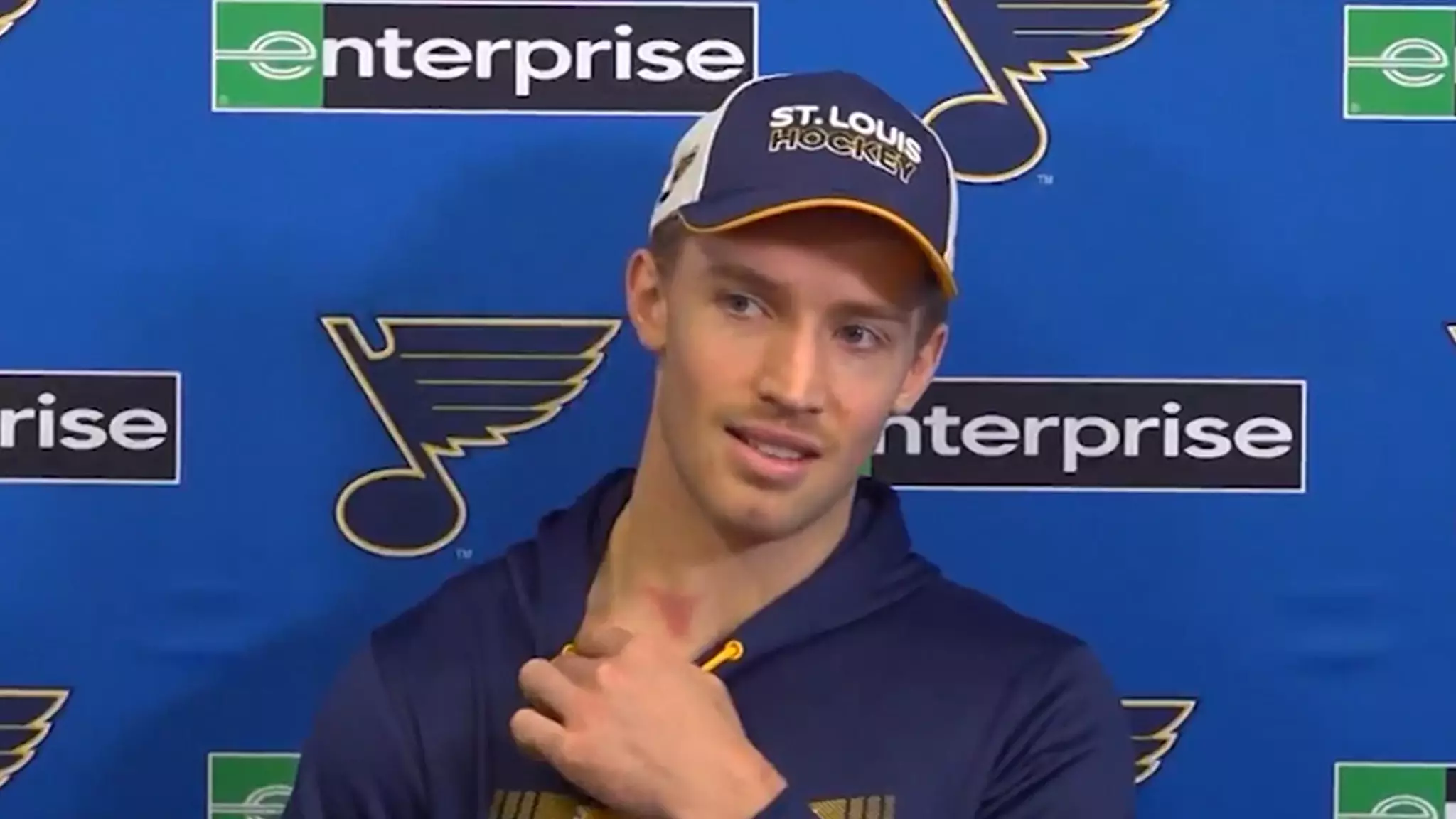The hockey community collectively breathed a sigh of relief when St. Louis Blues player Dylan Holloway returned to the team’s facility after a frightening health scare. On Tuesday night, Holloway was rushed to the hospital following a significant injury during a game against the Tampa Bay Lightning. Just 19 minutes into the first period, a fast-moving puck struck him near his neck, leading to a brief loss of consciousness. Fortunately, Holloway’s recovery has been swift, demonstrating both his resilience and the efficacy of prompt medical response in sports.
The scene was intense and alarming. Holloway was positioned near his own goal when he was hit by a wrist shot fired by Nick Paul. Initially, there were no visible signs of distress as he continued to skate, even coming close to scoring shortly thereafter. However, the true severity of the incident soon became apparent. After returning to the bench, his condition deteriorated, and the medical team had to act quickly. The gravity of the situation is underscored by the image of Holloway being laid on a stretcher, an image that would send chills down the spine of any fan. Thankfully, the medical staff confirmed that he was “alert and in stable condition,” allowing both the team and fans to exhale.
One cannot overstate the critical role that rapid medical intervention played in ensuring Holloway’s safety. In a sport where high-speed impacts and flying pucks are part of the game, hockey players are constantly at risk of injury. The quick action taken by the medical team not only saved Holloway from potential complications but also serves as a stark reminder of the inherent dangers athletes face daily. Blues coach Drew Bannister encapsulated the emotional impact of the incident, likening the team’s reaction to being informed of a family member’s serious health crisis—a testament to the tight bonds formed within sports teams.
As Holloway addressed the media just hours after the incident, his upbeat demeanor indicated improvement. He relayed that although he was ordered to refrain from any activity for 24 hours, he felt ready to return to practice soon afterward. This optimistic news serves as a beacon of hope, not just for Holloway, but for his teammates and the fan base that rallied behind him during his spell of uncertainty. The Blues would eventually go on to win the game 3-2, but it was clear that the real victory lay in Holloway’s recovery and return to health.
The incident highlights the resilience of not only the individual athlete but also the supportive structure provided by teams in the face of adversity. In moments of crisis, the camaraderie and dedication within the sport shine brightly, making the NHL community a tightly knit family. With hopefulness tinged with caution, all eyes will be on Dylan Holloway as he continues his journey back to the ice, embodying the spirit of recovery and tenacity in professional sports.

